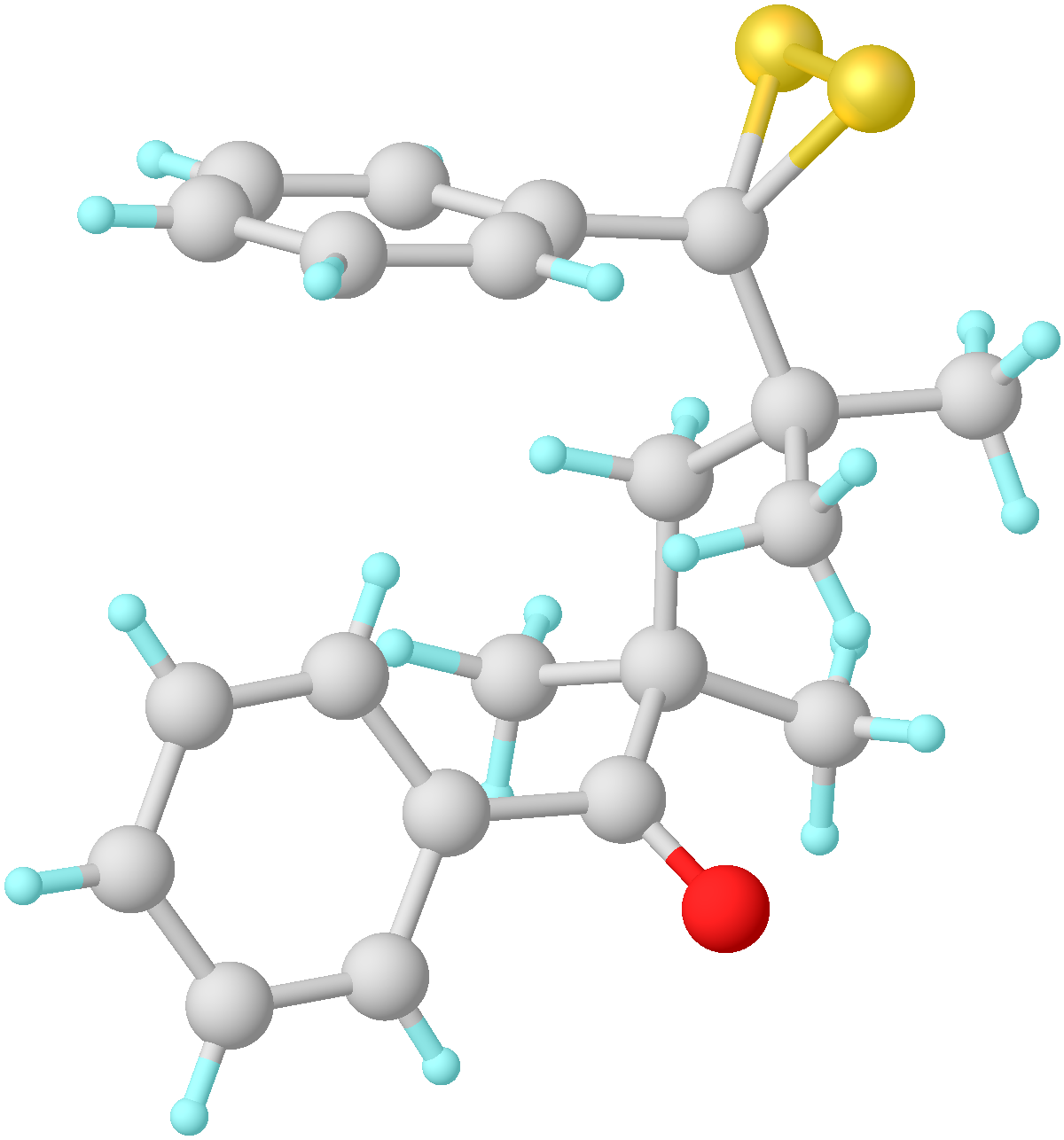dithiirane on:
[Wikipedia]
[Google]
[Amazon]
In
KSCN + C2H4O2CO -> KOCN + C2H4S + CO2
The metal-catalyzed reaction of sulfur with alkenes has been demonstrated.
:

organic chemistry
Organic chemistry is a subdiscipline within chemistry involving the science, scientific study of the structure, properties, and reactions of organic compounds and organic materials, i.e., matter in its various forms that contain carbon atoms.Clay ...
, episulfides are a class of organic compound
In chemistry, organic compounds are generally any chemical compounds that contain carbon- hydrogen or carbon-carbon bonds. Due to carbon's ability to catenate (form chains with other carbon atoms), millions of organic compounds are known. Th ...
s that contain a saturated, heterocyclic ring consisting of two carbon
Carbon () is a chemical element with the symbol C and atomic number 6. It is nonmetallic and tetravalent—its atom making four electrons available to form covalent chemical bonds. It belongs to group 14 of the periodic table. Carbon makes ...
atoms and one sulfur
Sulfur (or sulphur in British English) is a chemical element with the symbol S and atomic number 16. It is abundant, multivalent and nonmetallic. Under normal conditions, sulfur atoms form cyclic octatomic molecules with a chemical formul ...
atom. It is the sulfur analogue of an epoxide
In organic chemistry, an epoxide is a cyclic ether () with a three-atom ring. This ring approximates an equilateral triangle, which makes it strained, and hence highly reactive, more so than other ethers. They are produced on a large scale ...
or aziridine
Aziridine is an organic compound consisting of the three-membered heterocycle . It is a colorless, toxic, volatile liquid that is of significant practical interest. Aziridine was discovered in 1888 by the chemist Siegmund Gabriel. Its deriva ...
. They are also known as thiiranes, olefin sulfides, thioalkylene oxides, and thiacyclopropanes. Episulfides are less common and generally less stable than epoxides. The most common derivative is ethylene sulfide ().
Structure
According toelectron diffraction
Electron diffraction refers to the bending of electron beams around atomic structures. This behaviour, typical for Wave (physics), waves, is applicable to electrons due to the wave–particle duality stating that electrons behave as both particle ...
, the and distances in ethylene sulfide are respectively 1.473 and 1.811 Å. The and angles are respectively 66.0 and 48.0°.
Preparation
History
A number of chemists in the early 1900s, including Staudinger and Pfenninger (1916), as well as Delepine (1920) studied episulfides.Sander, M. Thiiranes. Chem. Rev. 1966, 66(3), 297-339. I 1934 Dachlauer and Jackel devised a general synthesis of episulfides from epoxides using alkali thiocyanates and thiourea.Contemporary methods
Following the lead of Dachlauer and Jackel, contemporary routes to episulfides utilize a two-step method, converting an olefin to an epoxide followed by thiation usingthiocyanate
Thiocyanate (also known as rhodanide) is the anion . It is the conjugate base of thiocyanic acid. Common derivatives include the colourless salts potassium thiocyanate and sodium thiocyanate. Mercury(II) thiocyanate was formerly used in pyro ...
or thiourea
Thiourea () is an organosulfur compound with the formula and the structure . It is structurally similar to urea (), except that the oxygen atom is replaced by a sulfur atom (as implied by the '' thio-'' prefix); however, the properties of ur ...
.
:
Episulfides can also be prepared from cyclic carbonates, hydroxy mercaptans, hydroxyalkyl halides, dihaloalkanes, and halo mercaptans. The reaction of ethylene carbonate and KSCN gives ethylene sulfide:
:Reactions
Common uses of episulfides in both academic and industrial settings most often involve their use as monomers in polymerization reactions. Episulfides have an innate ring strain due to the nature of three-membered rings. Therefore, most reactions of episulfides involve ring-opening. Most commonly, nucleophiles are employed for the ring-opening process. For terminal episulfide, nucleophiles attack the primary carbon. Nucleophiles include anionic hydride, thiolates, alkoxide, amines, and carbanions. :Applications
Thiiranes occur very rarely in nature and are of no significance medicinally. Very few commercial applications exist, although the polymerization of episulfide has been reported.Dithiiranes
Dithiiranes are three membered rings containing two sulfur atoms and one carbon. One example was prepared by oxidation of a 1,3- dithietane.
References
{{reflist Functional groups